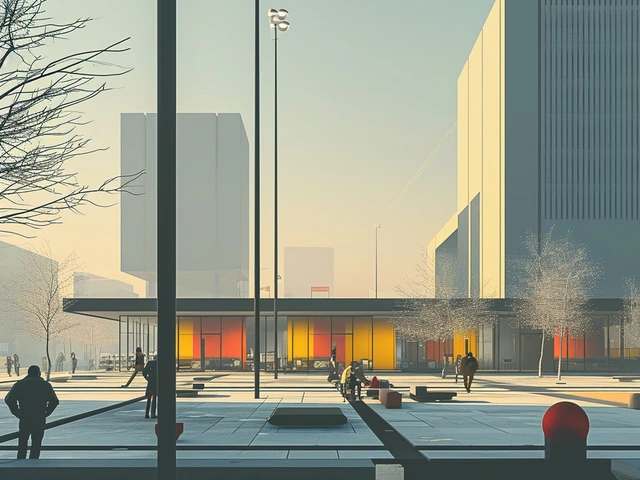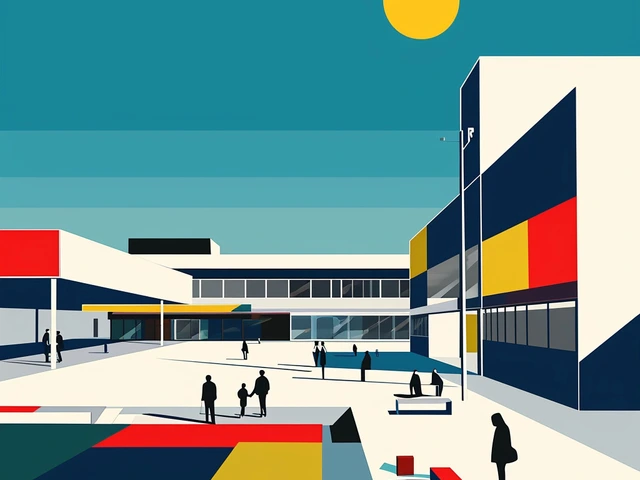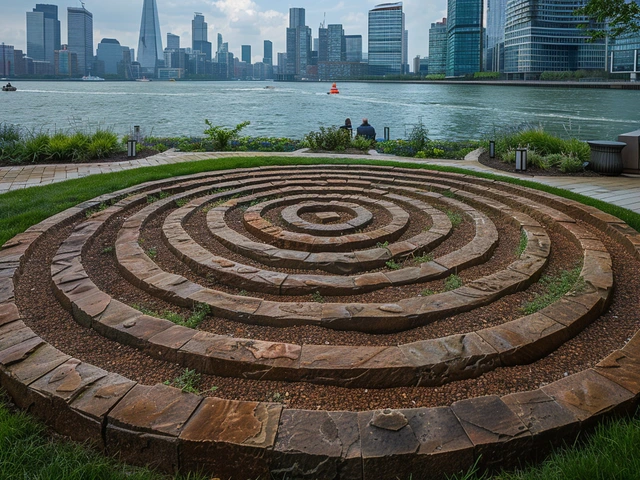Origins and Philosophy of De Stijl
The De Stijl movement, which translates to 'The Style' in Dutch, began in 1917 and became one of the pillars of modern art. Emphasizing simplicity and abstraction, the movement sought to break down art into its basic elements. Founding members Piet Mondrian and Theo van Doesburg advocated for a reductionist approach, where only straight lines and primary colors would shape compositions. This philosophy was rooted in a search for spiritual harmony and order, advocating that art should be devoid of representational forms.
The impact of De Stijl is evident not merely in the visual arts but also in its profound influence on architecture and furniture design. Gerrit Rietveld, a key figure within the movement, designed the iconic Red and Blue Chair, epitomizing the movement's aesthetic ethos with primary colors and simple forms. The influence extended beyond objects to buildings, the most famous example being Rietveld's Schroder House which is characterized by a dynamic interplay of planes and colors. This structure defied traditional architecture with its open plan and use of space, encapsulating De Stijl principles.
One of the distinguishing features of De Stijl art is its abstraction. By limiting their palettes and using only horizontal and vertical lines, the artists aimed to achieve a universal visual language that transcends cultural and individual distinctions. This vision of universality and harmony was a direct response to the chaos of World War I, suggesting that simplicity and order could lead to a more peaceful society. It is the visionary aspect of De Stijl that paved the way for later developments in abstract art, influencing movements such as Bauhaus and Minimalism.
Key Figures of the Movement
A pivotal figure in De Stijl, Piet Mondrian’s work evolved from figurative painting to an austere form of abstraction called Neoplasticism. His iconic paintings, such as 'Composition with Red, Blue, and Yellow', are characterized by a grid of vertical and horizontal lines that segment the canvas into varying geometric forms, filled with stark primary colors against a white background. These compositions reflect his philosophical studies which favored a clear, mathematical order of elements.
Theo van Doesburg, another primary force behind De Stijl, was not only pivotal in forming the movement’s theoretical base but also in disseminating its principles through 'De Stijl' magazine. He collaborated with architects and designers thereby broadening the scope of the movement from mere painting to a lifestyle of aesthetic. Unlike Mondrian, who maintained stringent adherence to horizontal and vertical lines, van Doesburg introduced diagonals in his later work, suggesting a dynamic equilibrium. This caused a split within the group, showcasing the evolution and challenges of maintaining a purist adherence to a rigid doctrine.
Each member brought their unique interpretation to De Stijl’s core philosophy, which enhanced its richness while also challenging its unity. As the movement evolved, so did its ideas, adapting and influencing diverse fields such as graphic design, typography, and even urban planning.
Iconic Masterpieces and Architectural Works
A tour of De Stijl's most significant works cannot overlook Mondrian's series of grid paintings which popularized the style globally. The strict geometry and restrained palette invite viewers to find beauty in simplicity and balance. These paintings serve not only as artworks but as manifestations of philosophical ideals, beautifully intertwining aesthetic pleasure with conceptual depth.
Gerrit Rietveld’s Schroder House in Utrecht stands as a monumental architectural achievement under De Stijl. With its sliding walls and floating planes, the house adapts to the needs of its inhabitants, showcasing an early example of modular design. Its radical aesthetics broke away from the traditional design norms of its time and demonstrated a new way of thinking about living spaces.
Another noteworthy aspect of the De Stijl movement is its contribution to public art and architectural projects. Although less known, van Doesburg’s color schemes for university halls and Mondrian's designs for dance hall interiors spread De Stijl’s reach into the community, illustrating their holistic approach to the arts. These projects underscored the movement’s commitment to social unity and utility through artistic endeavor.
De Stijl’s Legacy and Influence on Modern Design
The principles of De Stijl continue to influence contemporary art and design disciplines, echoing through the minimalism seen in modern graphic design, furniture, and even technology product design. The movement's emphasis on the essentials of form and color, and its avoidance of ornamentation, has helped shape the development of digital interfaces and minimalist design that prioritizes usability and simplicity.
The legacy of De Stijl is thus not confined to the past; it persists as a dynamic tradition that continues to inspire new generations of designers and artists around the world. By studying De Stijl, we not only appreciate a pivotal chapter in the history of art but also understand better why modern aesthetics have evolved in particular ways. Through exhibitions, retrospectives, and scholarly work, the discourse around De Stijl remains vibrant, ensuring that its revolutionary concepts are still relevant and influential in today's artistic landscape.


